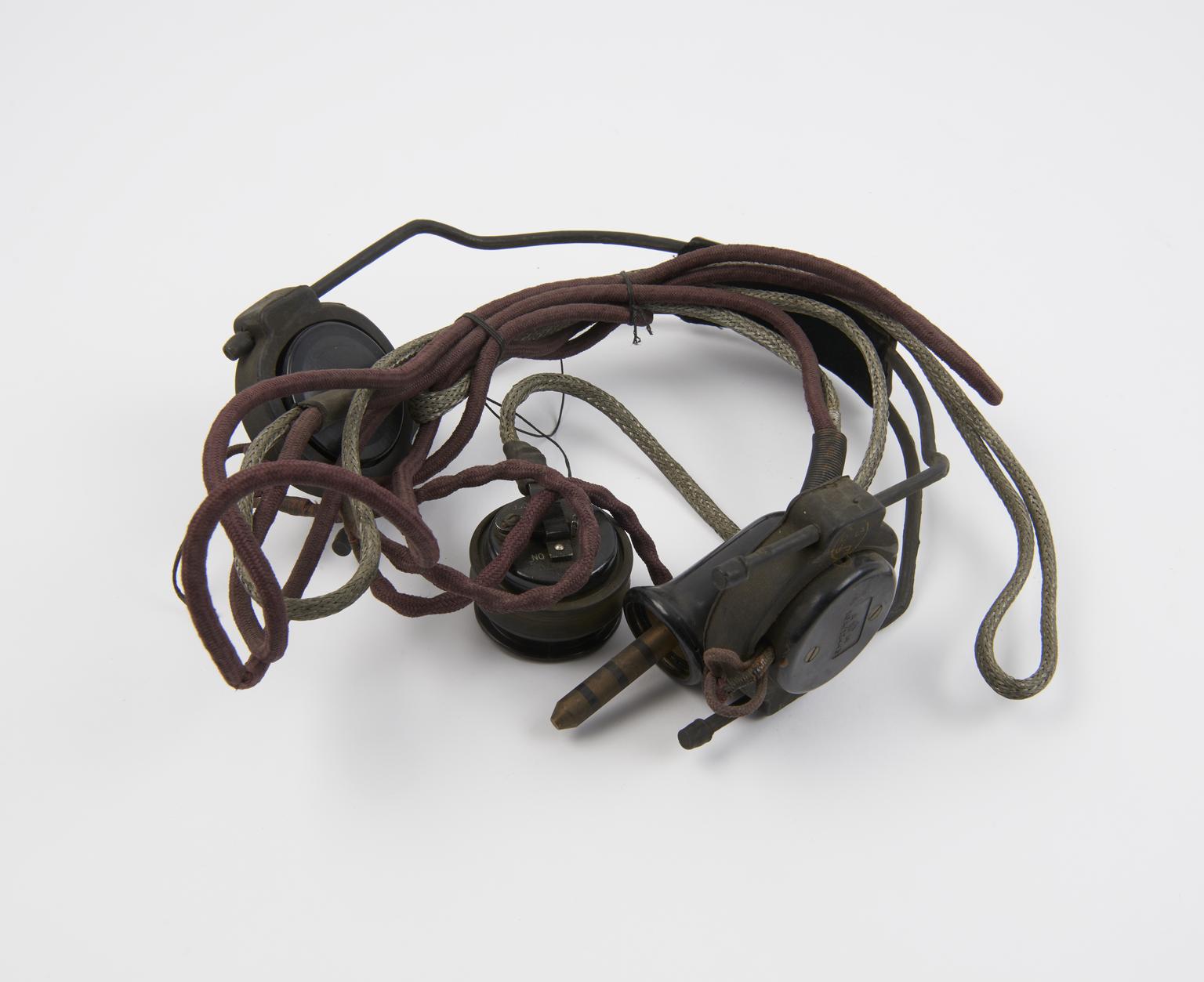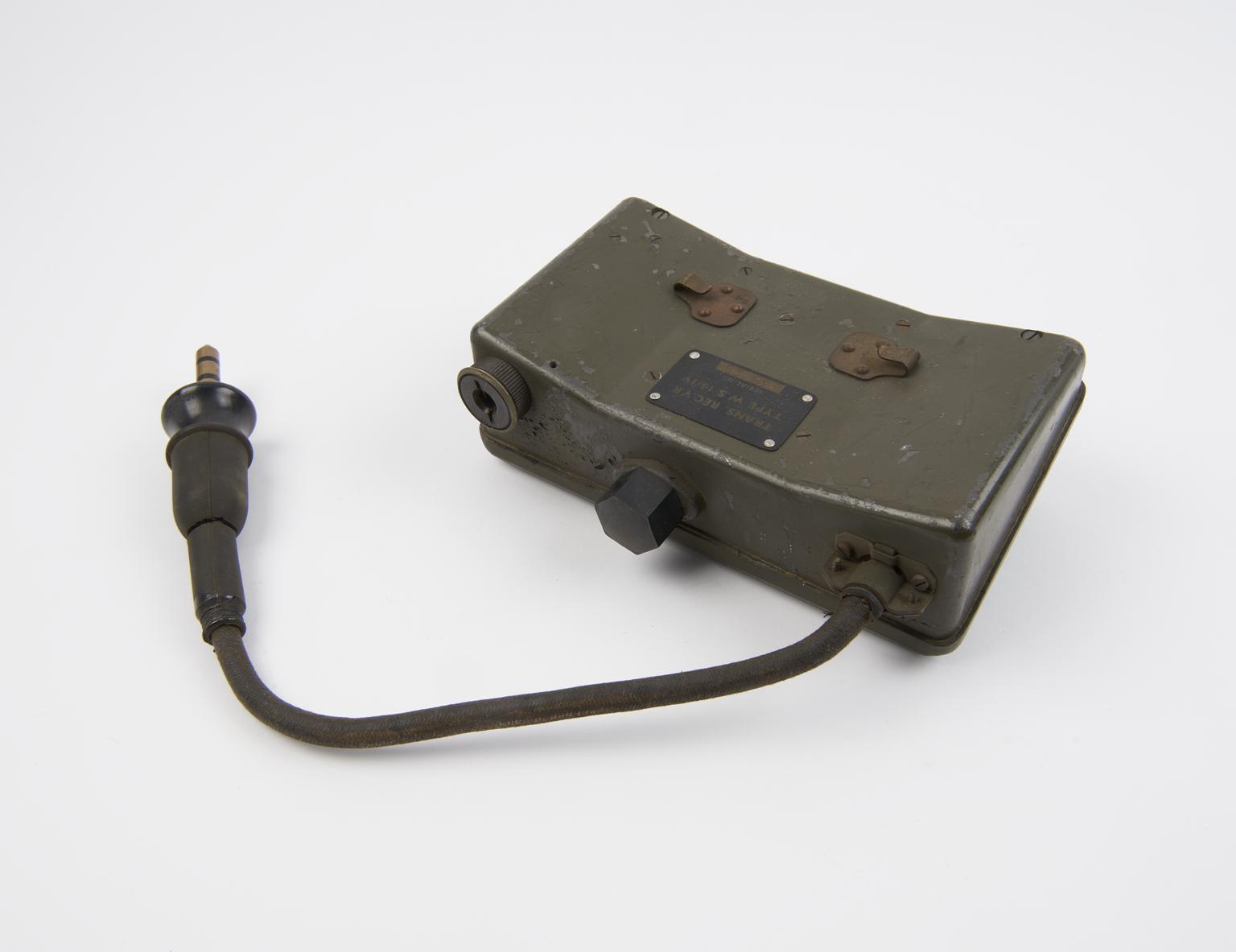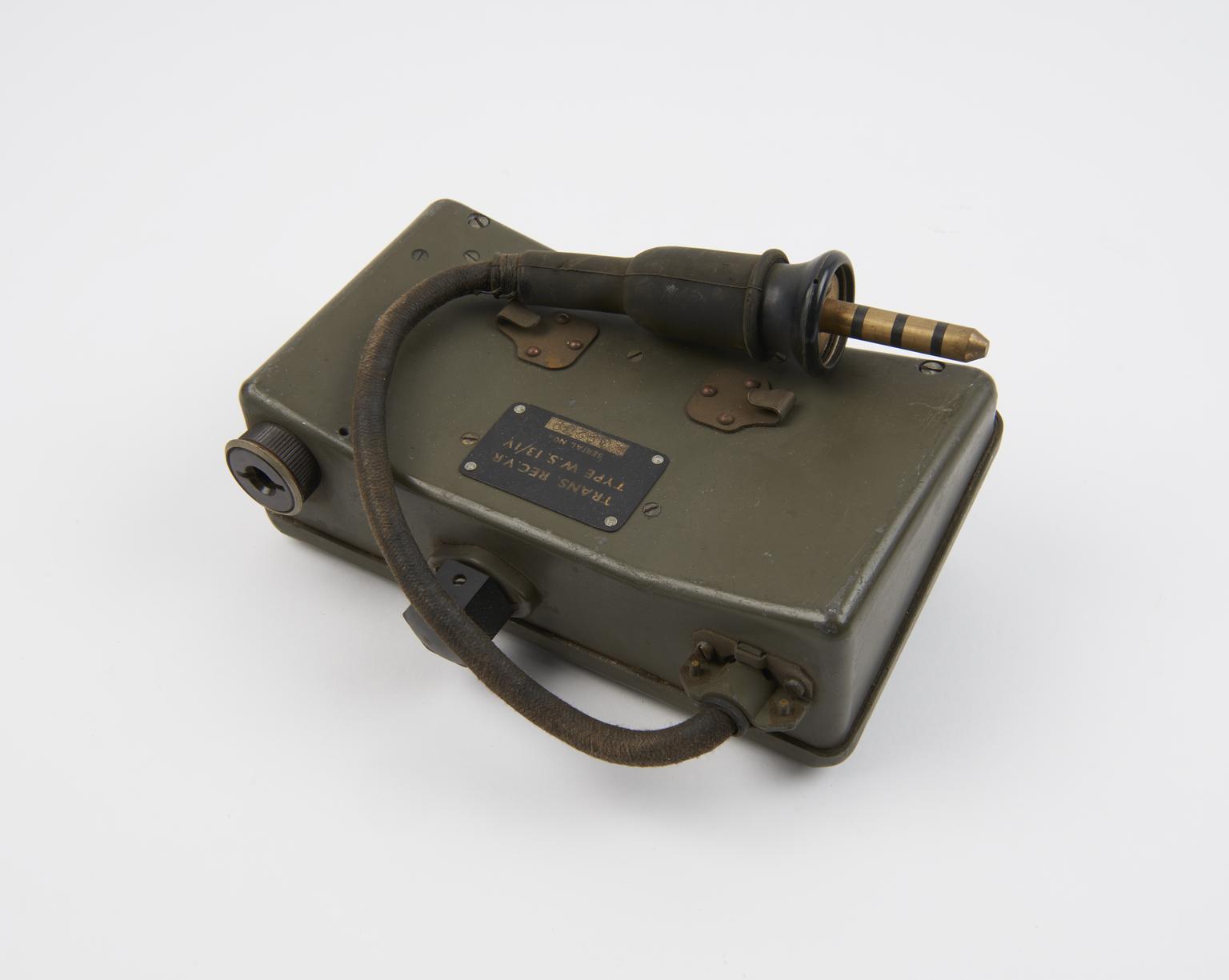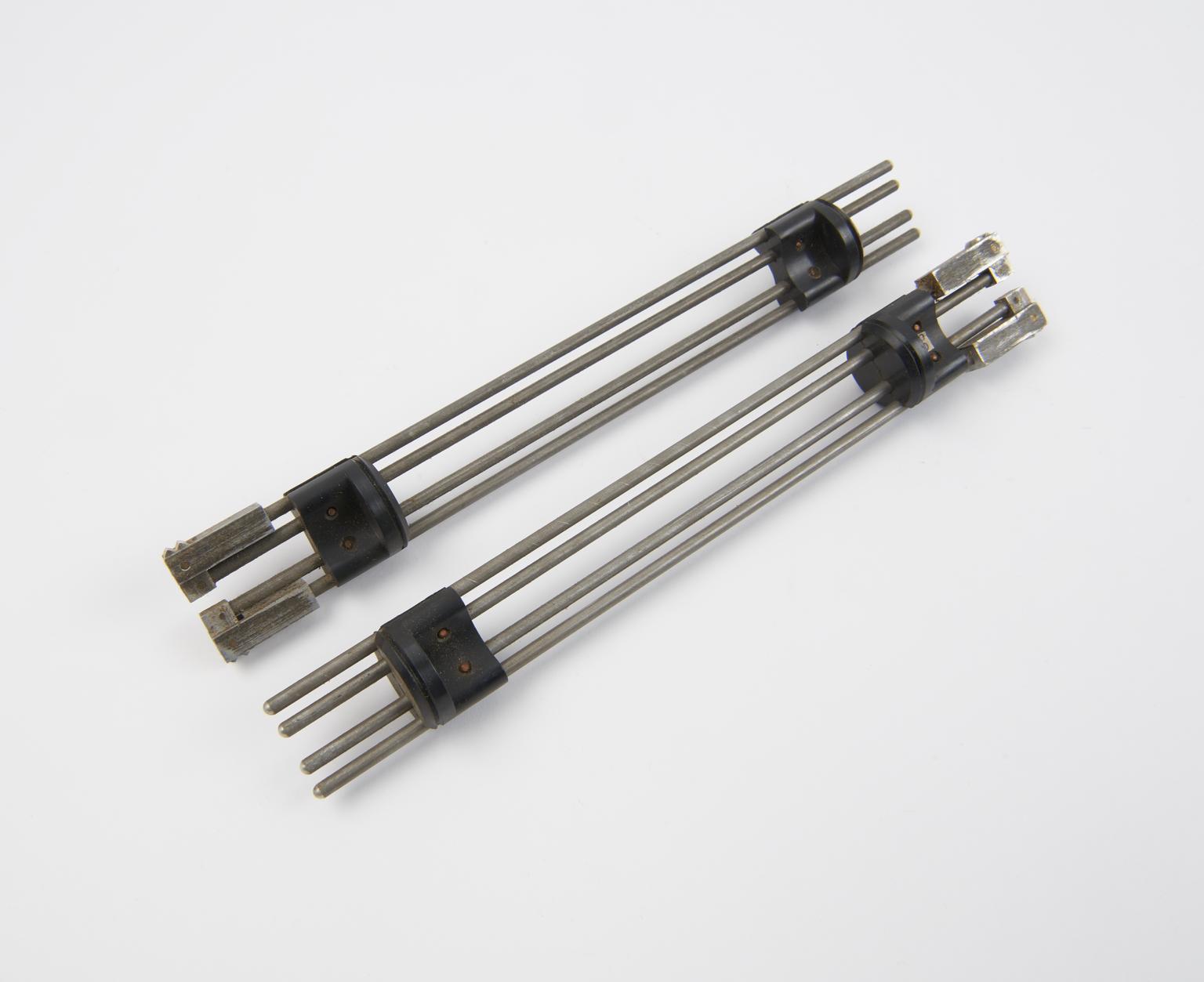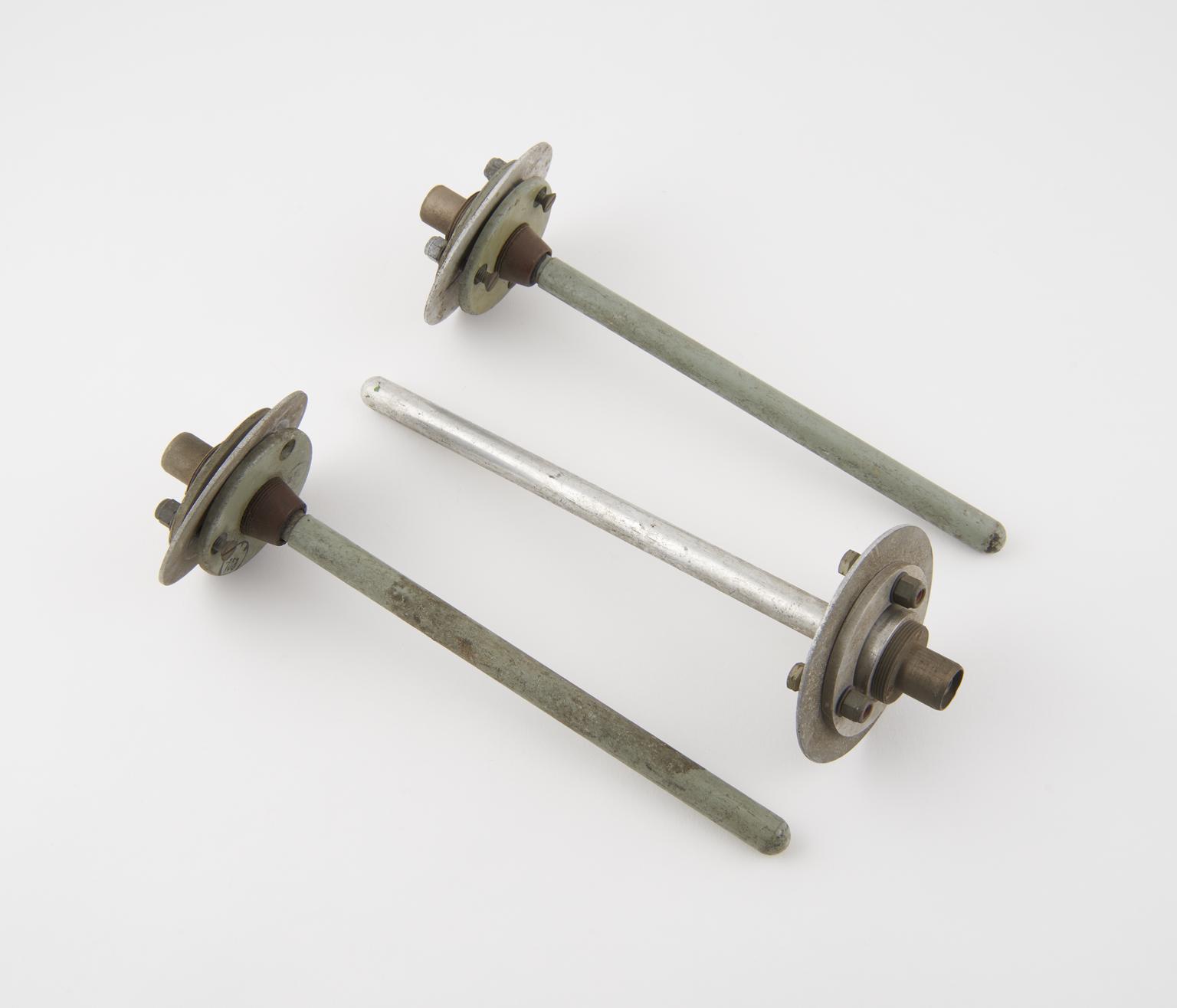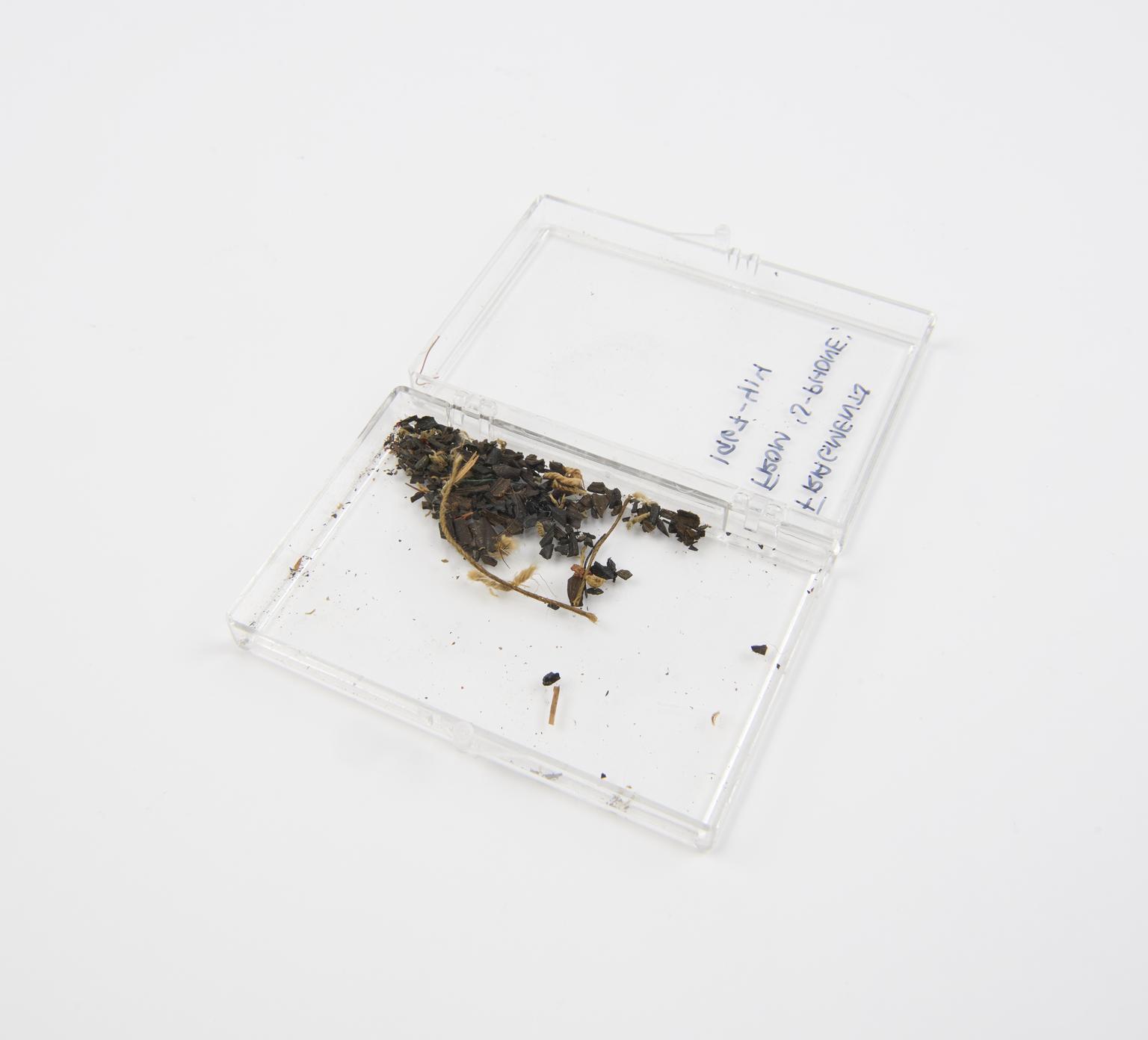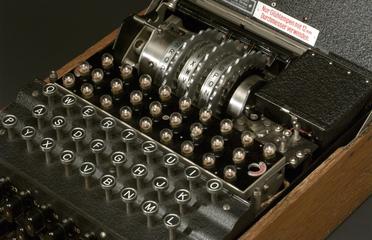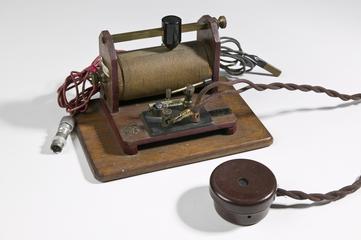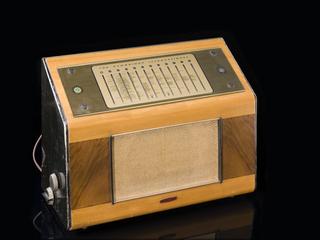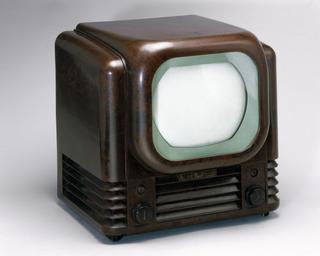'S-phone' personal portable UHF transceiver, 1941-1945
'S-phone' type 13/Mk IV personal portable UHF transmitter/receiver, designed by Charles Bovill, unknown maker, British, 1942-1945.
More
The 'S-Phone' personal receiver was design by Charles Bovill (1911-2001), and used by troops during the Second World War. It was small enough to be carried in a suitcase, and enabled Special Operations Executive aircraft and agents in the field to communicate with each other within a range of 30 miles. Unusually for the period, transmission and reception could take place simultaneously, allowing normal two-way conversation. The equipment was powered by a battery made up of ten rechargeable cells attached to a belt. Because the S-Phone was intended for espionage it used an ultra high frequency (UHF) band which was not well monitored. It also used different frequencies for reception and transmission, meaning that no single receiver could overhear both sides of a conversation. The directional aerial was designed to provide good vertical reception, but was not very good at transmitting or receiving horizontally along the ground. A rubber seal around the microphone prevented sound leakage, to aid with secretive communication.
- Materials:
- metal (unknown) , paint and electronic components
- Object Number:
- 1967-414/1
- type:
- transceiver















